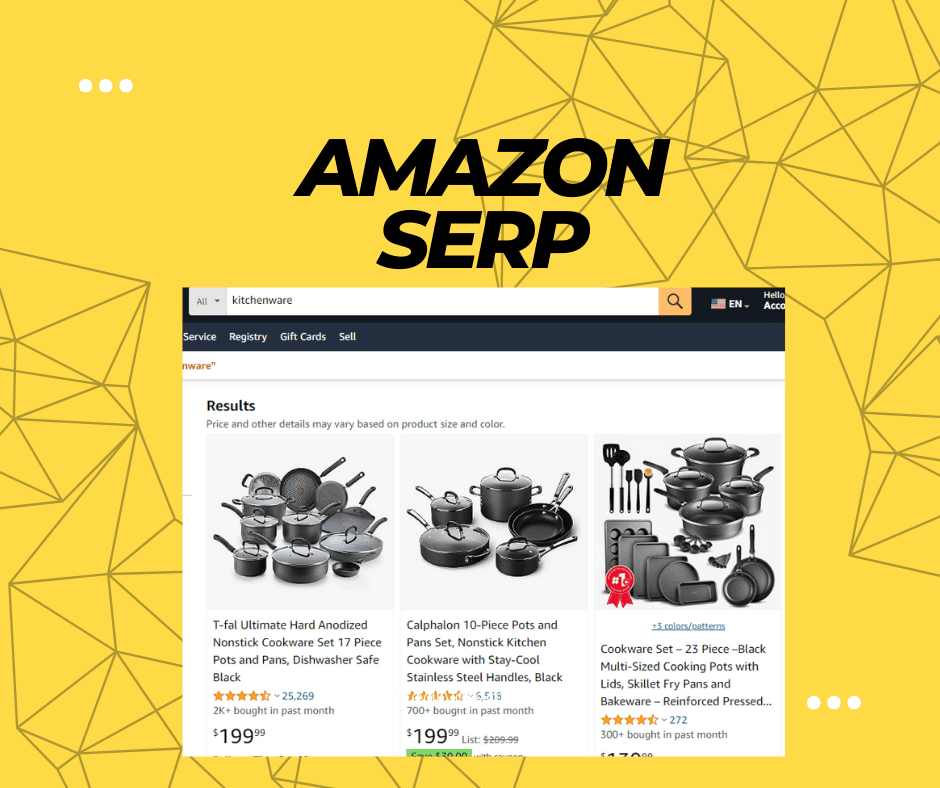At TWENTY TWENTY our team of Amazon experts are constantly running tests and keeping up with best practices to improve Amazon SERP.
Whether you’re just starting out or you’ve been navigating the Amazon jungle for a while, understanding the Amazon Search Engine Results Page (SERP) is crucial for your success.
In this guide, we’ll break it all down for you, sharing insights, strategies, and a few personal anecdotes from Wakil, one of our team members.
Understanding Amazon SERP
Definition and Basics
Let’s start with the basics. Amazon SERP, short for Search Engine Results Page, is the digital battleground where your products fight for visibility when customers search on Amazon. It’s where potential buyers make crucial decisions.
Imagine this: you’re a sailor setting out on uncharted waters. Understanding SERP is like having a map of hidden treasures. We’ll uncover the mysteries and show you how to claim your piece of the Amazon treasure chest.
I remember when I first started selling on Amazon. My products were like tiny fish in a vast ocean. But understanding SERP changed everything. It’s like knowing the secret map to buried treasure.
Components of Amazon SERP
On Amazon SERP, you’ll find various components like product listings, sponsored products, and even sponsored brands. Each element plays a unique role in catching the shopper’s eye.
The SERP landscape is multilayered. It’s not just a list of products; it’s a dynamic space with various components. Here’s what you’ll find on Amazon SERP:
- Product Listings: The core of SERP, where your product details, reviews, and ratings are showcased.
- Sponsored Products: Paid ads that can help you leapfrog competitors.
- Sponsored Brands: Promote your brand and multiple products at once.
- Filters and Sorting: Tools for shoppers to refine their searches.
- Pro Tip: Eye-catching images and compelling product titles are your secret weapons here. Invest time in crafting these elements; it’s worth it!

The Algorithm Behind SERP
Amazon A9 Algorithm
Now, let’s talk about the wizard behind the curtain – Amazon’s A9 algorithm. Think of A9 as the gatekeeper of SERP. It decides which products get the spotlight and which ones lurk in the shadows.
Picture yourself as a detective solving a complex case. A9 relies on various factors, including keywords, relevance, and conversion rates, to determine rankings.
We’ll provide insights into cracking the A9 code and boosting your rankings and sales.
When I first dove into the world of Amazon SERP, I had to learn the A9 dance. Keywords, relevance, conversion rates – it’s like a puzzle that, when solved, can boost your rankings and sales.
SEO and Amazon SERP
Yes, you read it right – SEO matters on Amazon, just like it does on Google. Keywords are your compass in the Amazon wilderness. Thorough keyword research is your treasure map of what potential customers are searching for.
But it’s not just about keywords; your product descriptions and bullet points are your sales pitch. Craft them wisely to convince and inform shoppers effectively.
Strategies for New Sellers
Building a Strong Foundation
New sellers, this section is for you. Think of it as laying the cornerstone of your Amazon empire. Building a strong foundation involves three key elements:
- Customer Service: Happy customers leave great reviews, which, in turn, boost your Amazon SERP rankings.
- Competitive Pricing: Finding the sweet spot between profit and affordability.
- Quality Products: Deliver what you promise to earn trust.
When we started, we focused on providing exceptional service. Happy customers leave great reviews, and great reviews boost your Amazon SERP rankings.
Leveraging Sponsored Products
Sponsored Products act as the express lane to SERP success. They provide an initial push in visibility, like a spotlight on your offerings.
I still remember my first sponsored campaign – it was a game-changer. In this section, we’ll discuss how to optimize your ad campaigns, monitor spending, and make necessary adjustments.
Advanced Strategies for Experienced Sellers
Data-Driven Decision Making
Experienced sellers, you’ve been around the block. Now it’s time to get analytical. Dive into your data to refine your strategy. What products are performing well? What keywords are driving sales?
A simple change in product images can lead to a significant increase in click-through rates. Data is your compass; use it wisely.
Expanding Beyond Amazon
As you gain experience, consider expanding beyond Amazon. Multichannel selling can be a game-changer. Diversify your income streams to reduce risk.
Expanding to other platforms can help stabilize the income. Don’t put all your eggs in one basket; it’s an age-old piece of advice for a reason.
Staying Updated with Amazon SERP
Amazon is like a river – constantly changing its course. To stay afloat, you must stay updated. Follow Amazon’s announcements, read industry blogs, and actively participate in seller communities.
I’ve personally learned invaluable lessons from fellow sellers in Amazon groups. They share insights, and strategies, and keep each other informed about Amazon’s latest algorithm updates.
Conclusion
In conclusion, Amazon SERP is the heartbeat of your Amazon business. Understanding it is like wielding a powerful sword in a medieval battle. Whether you’re a new seller looking to establish your presence or an experienced seller aiming for growth, mastering Amazon SERP is the key.
Remember, it’s not just about selling products; it’s about creating a brand and providing value to customers. And as you navigate the ever-changing Amazon landscape, keep learning, experimenting, and adapting. That’s the secret sauce to success in the world of eCommerce.
Don’t have time or want help? Speak to an Amazon Expert about your business, please get in touch.
